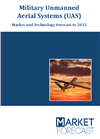‘Fly early and fly often’ is part of the culture at Aurora Flight Sciences, a Boeing company; it’s a motto that extends to autonomy development through a program called Accelerated Testing of Live Autonomy Software or ATLAS. ATLAS is the development and test infrastructure that enables an efficient and effective transition from written code to a mission capability integrated into an aircraft.
The best autonomy software is developed with frequent mission-level testing, and that testing cannot stay in simulation. With ATLAS, we rapidly advance autonomy testing through simulation stages (software to processor to hardware–in-the-loop) and through progressive flight testing, from low-cost, low-risk small unmanned aircraft system (UAS) to larger aircraft. Our high-cadence flight testing, typically monthly, is key to developing technology that successfully transitions to mission-ready platforms. We iteratively build up mission complexity and robustness, burndown technology risk, and narrow the gap between test platform and mission aircraft.
Aurora’s flexible testing options maximize cost efficiency while accelerating development cycles and smoothing technology transition.

Market forecast by Region, Class, Type, and End-User. Country Analysis, Market and Technology Overview. Opportunities Analysis, and Leading Company Profiles
Download free sample pages More informationSoftware-in-the-loop (SIL): A computer environment that enables rapid software development and test, with the ability to simulate numerous aircraft on a single machine.
Processor-in-the-loop (PIL): A representative vehicle management system (VMS) and mission management system (MMS) to verify that the autonomy runs as expected on flight hardware. PIL setups are built to be portable for easy relocation between simulation labs.
Hardware-in-the-loop (HIL): An integrated hardware rig used to confirm successful autonomy integration with systems including sensors, actuators, and communications prior to flight. Aurora conducts HILSim testing for airframes ranging from small UAS to our DA42-based Centaur.
Risk reduction flight test: A Group 1 UAS that tests autonomy missions in flight quickly with low cost and reduced risk. Aurora uses fixed- and rotary-wing platforms, including a 13-pound small UAS made from dense foam. The foam aircraft takes off and lands vertically, uses fixed-wing forward flight, and has a 4-ft wingspan.
Advanced flight test: Larger, more feature-rich aircraft designed to accept new autonomous capabilities for cost-effective, real-world testing.
One of the autonomous capabilities Aurora has been developing using ATLAS is vehicle teaming to complete a DILR – detect, identify, locate, and report – mission. ATLAS enables testing with a blend of physical and virtual assets, which drives down costs and opens test capabilities. For example, a low-cost Group 1 UAS can be outfitted with a virtual sensor. Additional aircraft, both virtual and real, can be introduced into the test scenario. Because the user interface looks the same, the operator doesn’t know which aircraft and sensors are virtual and which are real. Test scenarios can be rapidly scaled while remaining effective and incurring minimal cost.
“With ATLAS, we can quickly edit tests and add and remove assets with lots of flexibility,” said Nick LaBarbera, program manager at Aurora. “Not only can we efficiently progress from simulation to real fight tests, but we can straddle the line between real and virtual, allowing us to create the just-right balance of test cost, risk, and relevancy.”